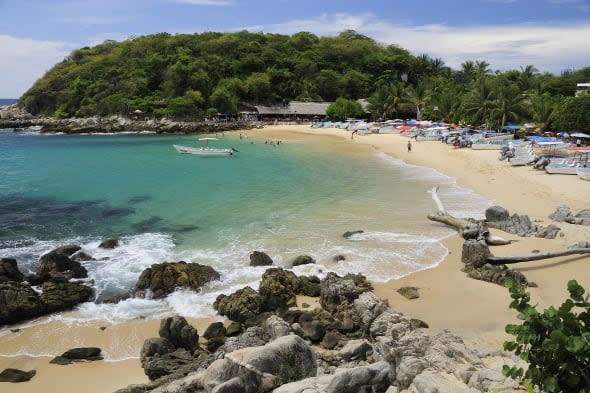Hurricane Amanda strikes in Mexico

Hurricane Amanda, the first storm of the year, formed this week in the Eastern Pacific.
The hurricane gained category 4 status with peak wind of 155mph (250kph).
Amanda started last week as a cluster of heavy showers and thunderstorms approximately 650 miles (1,046km) south-west of Manzanillo, Mexico, and encountered favourable conditions for tropical cyclone development.
The basic ingredients of warm sea surface temperatures, weak atmospheric wind shear and a small component of Coriolis Force were met and by Saturday the system had reached hurricane intensity.
Peak winds occurred on Sunday and, apart from a brief re-strengthening on Tuesday, Amanda weakened through the course of this week.
Although the hurricane season officially runs from May 15 each year in the Eastern Pacific, this week's storm has been unusual as major hurricanes are not typically expected at this time of year. Indeed, the observed wind speeds have surpassed the previous record for May (Hurricane Adolph, May 29 2001 with winds of 145mph/233kph), making it the strongest ever May hurricane.
Luckily, Amanda spent all of her life cycle hundreds of miles offshore from California and Mexico, limiting the storm impact, but even as she continues to weaken, the remnants are likely to bring disruption.
Current projections estimate that as the now tropical storm (and soon to be "tropical depression") moves eastwards, the residual atmospheric moisture is likely to bring high rainfall totals to parts of Central America this weekend. More than 4in (100mm) of rain could be recorded in the next few days, especially in southern Mexico and Guatemala.
Looking ahead through the rest of the season, the National Oceanographic and Atmospheric Administration (NOAA) has forecast a near-normal to above-normal hurricane season in the Eastern Pacific, especially with the prospect of El Nino returning this year. Conversely, the Atlantic basin is expected to see near-normal or below-normal hurricane activity.
www.meteogroup.com
MeteoGroup is Europe's largest independent weather forecast provider.
Related stories
Scientists tagging sharks to help predict hurricanes (video)
Storm chaser risks life for incredible extreme weather photographs
Giant hailstones kill 16 in China




